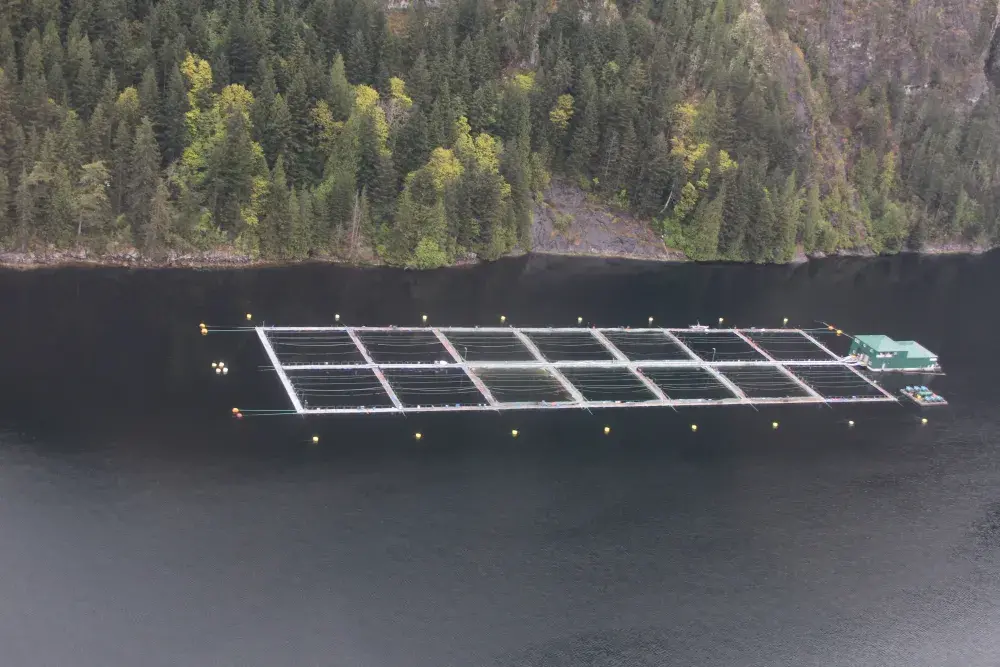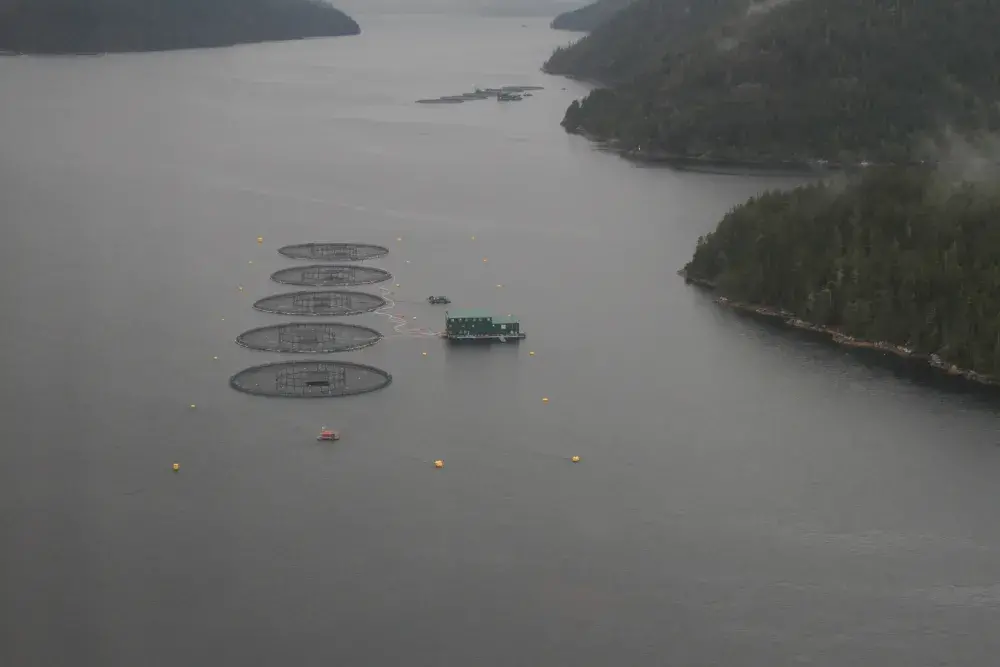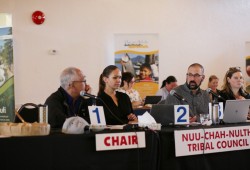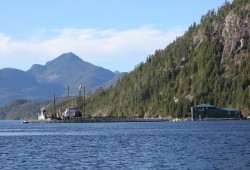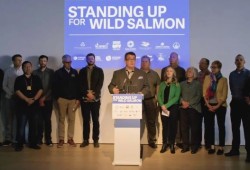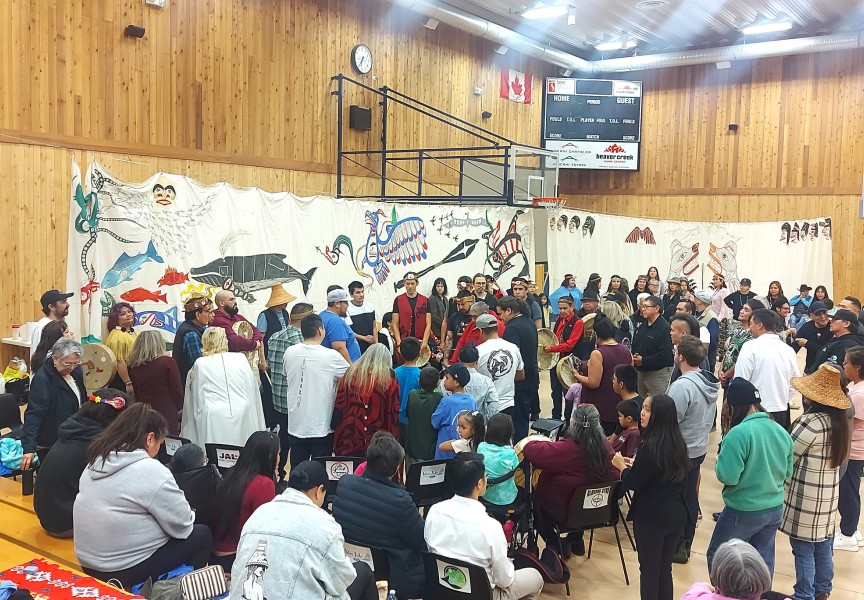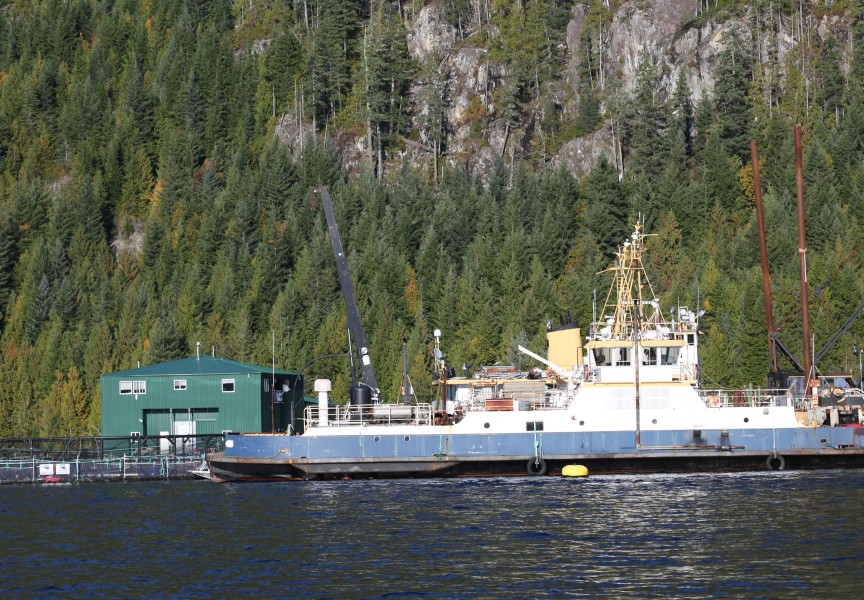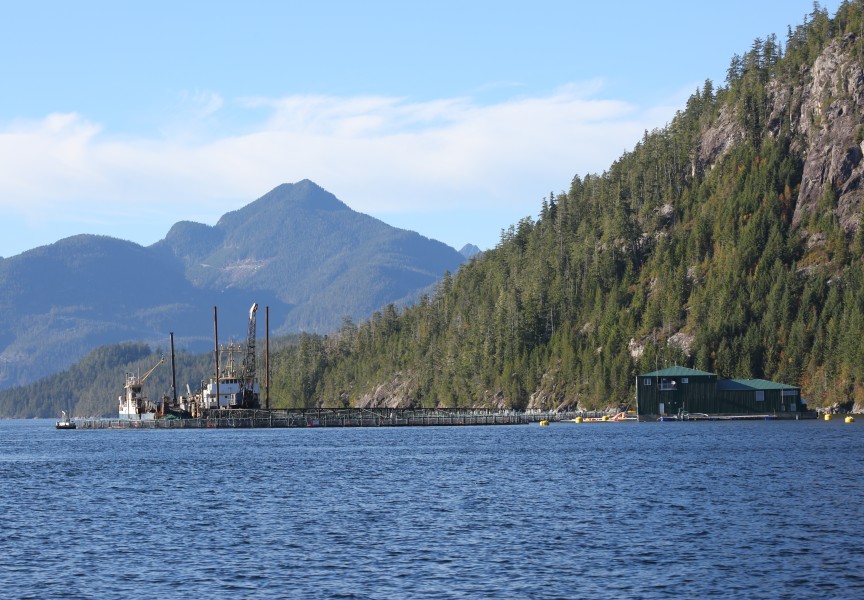With a few weeks left before British Columbia’s fish farm licences expire, the federal government remain tight lipped about the future of the industry.
All of the 85 finfish licences off the B.C. coast are due to expire on June 30, and renewals are being sought for 66 of the sites - most of which raise Atlantic salmon in the Pacific waters. With 52 of the active farms off the west coast of Vancouver Island, most of the sites are in Nuu-chah-nulth territory, evoking intensely divisive opinions from those who call the region their ancestral home.
Kevin Conley, a biologist and resource manager with Fisheries and Oceans Canada, addressed the uncertainty around the licences during a Nuu-chah-nulth Council of Ha’wiih Forum on Fisheries in Port Alberni June 5. He said DFO has collected input from coastal First Nations to help inform the possible re-issuance of the licences.
“That decision hasn’t been made yet on those renewals,” said Conley. “It’s going through the internal decision-making process.”
“DFO is now preparing recommendations related to renewal of these licences which will include a decision on licence duration,” wrote Fisheries and Oceans Canada in an email to Ha-Shilth-Sa. “Prior to any licencing cycle, DFO reviews current conditions of licence, performance of industry, updated science, and other factors.”
During the recent fisheries meeting Council of Ha’wiih Chair Wickaninnish, Cliff Atleo, expressed frustration at the federal department’s continued support for the proliferation of fish farms over the last generation, despite environmental problems with the practice. Atleo is also an Ahousaht member, and he explained that his First Nation allows Cermaq to operate salmon farms in its territory under agreed environmental standards and a benefits agreement that supports the community.
“We get stuck between a rock and a hard place,” he said.
‘Environmental devastation’
Hovering over the industry is a mandate from Prime Minister Justin Trudeau to “create a responsible transition plan from open net-pen salmon farming in coastal British Columbia waters by 2025.” A draft of this plan is expected some time this year.
In an interview with Ha-Shilth-Sa in December, Canada’s current Fisheries Minister Dianne Lebouthillier said the transition plan will not mean the immediate closure of fish farms off the B.C. coast. Since then, Lebouthillier and her office “continue to have meaningful conversations with all stakeholders involved.”
“We know that Pacific salmon stocks are fragile, and that protecting them will have long-term benefits for the entire West Coast,” stated the minister’s office. “We continue to work on a responsible transition plan that protects Pacific Salmon, while supporting workers and their communities.”
Some fear that to protect the status quo of the industry Ottawa is sitting on the fence, merely coming out with a transition plan by 2025 rather than taking permanent measures to remove ocean-based fish farms.
The First Nation Wild Salmon Alliance wants the open-net pens out of the water next year, listing over 120 First Nations in support. This encompasses most of the First Nations in British Columbia, including the Tseshaht, Uchucklesaht and Ditidaht in Nuu-chah-nulth territory.
The Wild Salmon Alliance cites a resolution from the First Nations Summit back in 2016, which states that finfish farms pose “serious and proven impacts” that threaten “the sustainability and survival of wild salmon stocks.”
For years the Union of BC Indian Chiefs has also opposed fish farms. In February the most recent of many resolutions against the practice was passed, stating that “open net-pen fish farming has long generated public concern for both its environmental devastation and its health consequences for wild aquatic species, becoming focal points for salmon-related diseases and viruses, for hazardous levels of parasitic sea lice impacting wild migratory juvenile salmon, and for unnatural levels of predation targeting vulnerable herring stocks.”
$6 million in benefits for Ahousaht
Both the First Nations Summit and UBCIC resolutions cited the United Nations Declaration on the Rights of Indigenous Peoples, stressing the right for Aboriginal communities to determine what happens in their territories. But this right to self determination is also being used in defense of keeping fish farms in the water, with strong words coming from the Ahousaht First Nation off the west coast of Vancouver Island.
Most of the finfish farms west of Vancouver Island raise Atlantic salmon. An exception are pens in Clayoquot Sound that raise chinook, which follows an agreement between Creative Salmon and Tla-o-qui-aht in the First Nation’s territorial waters.
Elsewhere in Clayoquot Sound Cermaq runs 15 sites, although not all are stocked at the same time. For over a decade the aquaculture operator has had a protocol agreement with Ahousaht to farm in the First Nation’s territory, worth an estimated $6 million in annual benefits for the Indigenous community.
Over 20 Ahousaht members work at Cermaq’s salt-water farms, processing plant and in support roles in Clayoquot Sound.
Ahousaht Acting Tyee Ha’wilth Hasheukumiss, Richard George, stated that closing the farms in his territory would lead to “devastating job losses, food security concerns and increased daily costs for Ahousaht musčim,” according to a column published by iPolitics in late 2023.
In a notice to members in November, Ahousaht’s hereditary chiefs stated that the First Nation’s agreement with Cermaq has brought numerous benefits, including funding sports, cultural events, covering the cost of funerals, as well as subsidizing Ahousaht’s fuel station and Ahous Hakuum water taxi.
“We are actively using funding secured through our protocol agreement to provide musčim with
food fish and enhance their food security,” stated the notice from Ha’wiih. “This is currently valued at more than $250,000 annually and is expected to continue growing exponentially as our community grows.”
The protocol agreement also entails specific standards for the farms. Ahousaht has required that the sea lice threshold be lower than what DFO normally requires, down to an average of less than 1.5 lice per fish during the sensitive period of February to July when wild salmon migrate out to the ocean. Elsewhere DFO requires special management measures if lice levels are an average of over three per fish.
Ahousaht is even considering more aquaculture.
“We are currently exploring sable fish, expanding our successful kelp farm, farming shellfish such as oysters and geoduck, and establishing clam gardens,” stated the hereditary chiefs.
The ‘amplification’ of disease
According to the Pacific Salmon Foundation, about half of the species’ populations are in some state of decline. A variety of factors are listed as the cause, including a changing climate, habitat degradation, pollution and the “introduction of disease-causing pathogens through aquaculture.”
A report from the foundation in 2022 stated that the density in net-pen fish farms “present ideal conditions for amplification of viruses, bacteria and parasites.”
“Given the perilous state of Pacific salmon migrating past these farms filled with Atlantic salmon – that amplify harmful pathogens and sea lice – we believe strongly that moving the farms out of the water is urgent and essential in order to rebuild Pacific salmon stocks in British Columbia,” stated Pacific Salmon Foundation President and CEO Michael Meneer when the report was published.
The risks that fish farms pose to wild stocks has been contested by the industry. With farm licences due to expire, in May a 617-page “textbook” was published by the B.C. Salmon Farmers Association, the B.C. Centre for Aquatic Health Sciences and the Coalition of First Nations for Finfish Stewardship.
“Pathogens shed by farms are diluted and degraded in the environment; this decreases the chance of wild fish getting infected from a farm-source disease,” stated the large study, titled Modern Salmon Farming in British Columbia: A Review.
The review also states that just three per cent of farmed salmon die in the ocean each year from infectious disease, adding that “we expect that even fewer wild salmon – dispersed in the environment – might die from farm-source diseases.”
Piscine orthoreovirus, or PRV, is one of these diseases that originated in the Atlantic Ocean. It’s now a risk to chinook due to the farms on the B.C. coast, according to the Pacific Salmon Foundation report.
“In Pacific salmon, PRV infection can result in rupture of the blood cells, which can lead to organ damage,” stated the foundation’s 2022 report. “PRV infects nearly all farmed Atlantic salmon in B.C. by the time they are ready to harvest, and recent findings from our research group indicate that resident wild chinook salmon are more likely to be infected with PRV the closer they are to a farmed salmon.”
But the industry’s 617-page review indicates that PRV isn’t such a risk to wild stocks. It notes that scientific evidence shows “infection does not cause disease, mortality or physiologically relevant swimming impairment” in wild sockeye, while none of the 272 Atlantic salmon fish health events reported to DFO from 2016 to 2022 were due to PRV.
“As evidence that accounts for all salmon farm threats – known and unknown – adult returns of iconic salmon populations were similar before and during the salmon farming years,” states the industry review. “Total Fraser River sockeye salmon adult returns averaged 6.8 million per year before salmon farming began in the Discovery Islands region (1962-1989) and 8 million per year during the salmon farming years (1990-2022).”
First Nations’ opposition closed farms
While this may sound convincing, many don’t trust the safety of fish farms. This has caused the number of sites on the B.C. coast to decline in recent years, with 15 being removed from the Discovery Islands and another 17 farms closed in the Broughton Archipelago amid opposition from First Nations in that region.
“There used to be way more farms than there is now, but because of lack of First Nations support many have been closed,” said Dallas Smith, a spokesperson for the Coalition of First Nations for Finfish Stewardship.
In that vein, Ottawa appears to be listening more to Indigenous communities with a stake in salmon farming, said Smith, who is also a member of the Tlowitsis First Nation. B.C. salmon farms employ 276 Indigenous people, and 17 formal agreements bring a total economic benefit of $50 million to First Nations, according to the coalition.
“It’s one thing to just talk about how you could phase something out, but to do it without a transition plan in place would put a lot of our communities at peril because we depend on the revenue, the jobs, the opportunity,” said Smith. “To just turn the taps off on that overnight would be catastrophic.”
Meanwhile it remains to be seen what a viable alternative to net pens would be. Land-based facilities won’t work, according to Ahousaht Ha’wiih.
“We have explored land-based aquaculture that are simply not economically viable in our Haḥuułii and come with significant climate concerns,” stated the November message to Ahousaht members.
“For a lot of the recirculation in closed containment technologies that are out there, we simply don’t have the power infrastructure to be in place,” said Smith.

